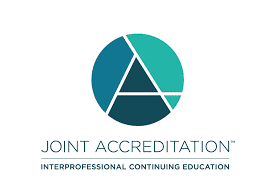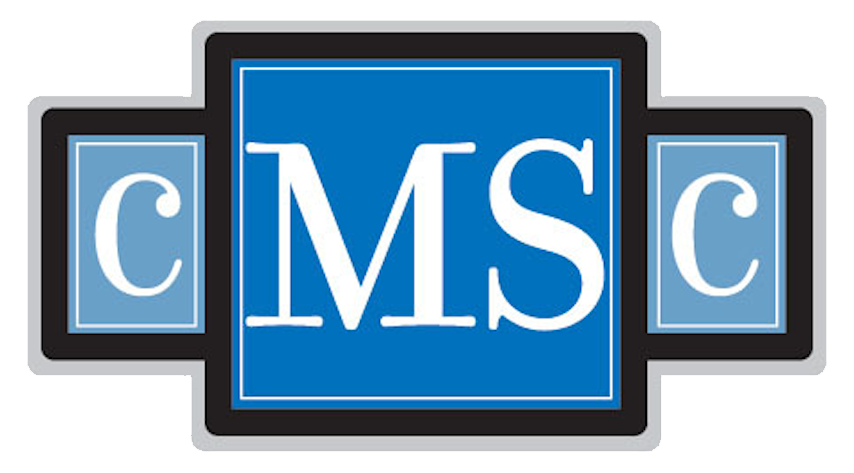Release Date: January 1, 2024
Valid for Credit through: January 1, 2025
Activity Available Online:
To access the article and evaluation online, go to https://www.highmarksce.com/mscare.
Target Audience:
The target audience for this activity is physicians, advanced practice clinicians, nursing professionals, social workers, and other health care providers involved in the management of patients with multiple sclerosis (MS).
Learning Objectives:
- Describe the extent to which common social and health disparities contribute to racial differences in ambulatory impairment in MS.
- Recognize the importance of distinguishing mediators from confounders in multivariable regression models.
Accreditation:
 In support of improving patient care, this activity has been planned and implemented by the Consortium of Multiple Sclerosis Centers (CMSC) and Intellisphere, LLC. The CMSC is jointly accredited by the Accreditation Council for Continuing Medical Education (ACCME), the Accreditation Council for Pharmacy Education (ACPE), and the American Nurses Credentialing Center (ANCC), to provide continuing education for the health care team.
In support of improving patient care, this activity has been planned and implemented by the Consortium of Multiple Sclerosis Centers (CMSC) and Intellisphere, LLC. The CMSC is jointly accredited by the Accreditation Council for Continuing Medical Education (ACCME), the Accreditation Council for Pharmacy Education (ACPE), and the American Nurses Credentialing Center (ANCC), to provide continuing education for the health care team.
This activity was planned by and for the healthcare team, and learners will receive .5 Interprofessional Continuing Education (IPCE) credit for learning and change.
Physicians:
The CMSC designates this journal-based activity for a maximum of .5 AMA PRA Category 1 Credit(s)™. Physicians should claim only the credit commensurate with the extent of their participation in the activity.
Nurses:
The CMSC designates this enduring material for .5 contact hour of nursing continuing professional development (NCPD) (none in the area of pharmacology).
Psychologists:
This activity is awarded .5 CE credits.
Social Workers:
As a Jointly Accredited Organization, the CMSC is approved to offer social work continuing education by the Association of Social Work Boards (ASWB) Approved Continuing Education (ACE) program. Organizations, not individual courses, are approved under this program. Regulatory boards are the final authority on courses accepted for continuing education credit. Social workers completing this course receive .5 general continuing education credits.
Disclosures:
Francois Bethoux, MD, editor in chief of the International Journal of MS Care (IJMSC), has served as physician planner for this activity. He has disclosed no relevant financial relationships. Alissa Mary Willis, MD, associate editor of IJMSC, has disclosed not relevant financial relationships. Authors Farren B.S. Briggs, PhD, ScM, Farrah J. Mateen, MD, PhD, Devon Conway, MD, MS Alessandro de Nadai, PhD; Erika S. Trapl, PhD; and Douglas D. Gunzler, PhD, have disclosed no relevant financial relationships.
The staff at IJMSC, CMSC, and Intellisphere, LLC who are in a position to influence content have disclosed no relevant financial relationships. Laurie Scudder, DNP, NP, continuing education director CMSC, has served as a planner and reviewer for this activity. She has disclosed no relevant financial relationships.
Method of Participation:
In order to receive CE credit, participants must:
- Review the continuing education information, including learning objectives and author disclosures.
- Study the educational content.
- Complete the evaluation, which is available at https://www.highmarksce.com/mscare.
Statements of Credit are awarded upon successful completion of the evaluation. There is no fee to participate in this activity.
Disclosure of Unlabeled Use:
This educational activity may contain discussion of published and/or investigational uses of agents that are not approved by the FDA. The CMSC and Intellisphere, LLC do not recommend the use of any agent outside of the labeled indications. The opinions expressed in the educational activity are those of the faculty and do not necessarily represent the views of the CMSC or Intellisphere, LLC.
Disclaimer:
Participants have an implied responsibility to use the newly acquired information to enhance patient outcomes and their own professional development. The information presented in this activity is not meant to serve as a guideline for patient management. Any medications, diagnostic procedures, or treatments discussed in this publication should not be used by clinicians or other health care professionals without first evaluating their patients’ conditions, considering possible contraindications or risks, reviewing any applicable manufacturer’s product information, and comparing any therapeutic approach with the recommendations of other authorities.
Contact Information:
For questions about this activity, please contact [email protected].

